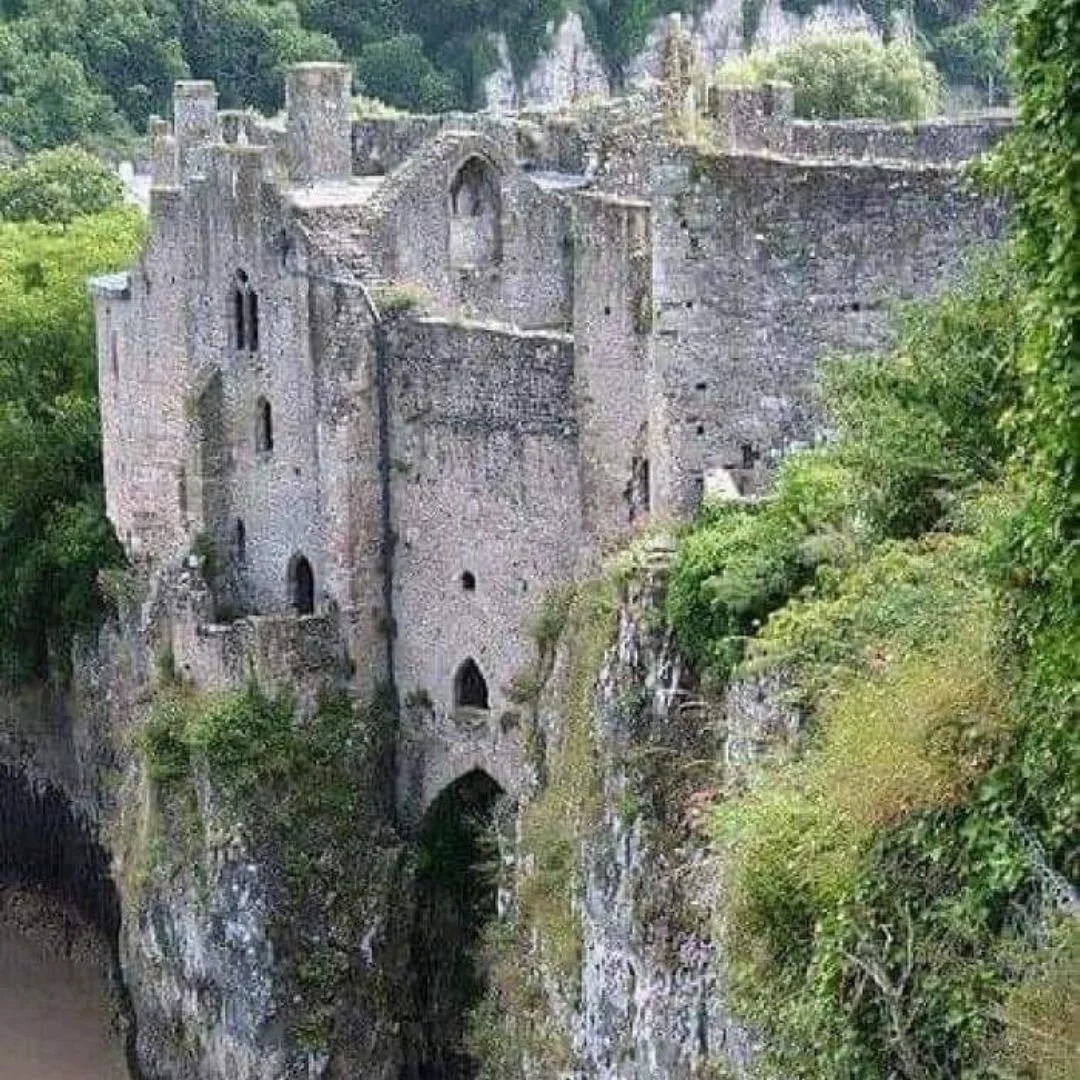Chepstow Castle: Oldest Surviving Post-Roman Stone Fort In Britain
Chepstow Castle is the oldest surviving post-Roman stone fort in Britain.
It's a beautifully preserved masterpiece of medieval engineering, perched high above the Wye Valley in Wales.
The precipitous limestone cliffs beside the river afforded an excellent defensive location.
It also features the oldest castle doors in Europe.
Construction started in 1067 by Earl William fitz Osbern, close friend of William the Conqueror, making it one of the first Norman strongholds in Wales.
In turn, William Marshal (Earl of Pembroke), Roger Bigod (Earl of Norfolk) and Charles Somerset (Earl of Worcester) all made their mark before the castle declined after the Civil War.
Magnates and power-brokers were constantly on the move.
Chepstow was just one residence in their vast estates – an impressive shell into which they would bring their gold and silver vessels, rich silk and brightly painted furniture.
In the 12th century, the castle was used in the conquest of Gwent, the first independent Welsh kingdom to be conquered by the Normans.
It was subsequently held by two of the most powerful Anglo-Norman magnates of medieval England, William Marshal and Richard de Clare.
However, by the 16th century its military importance had waned and parts of its structure were converted into domestic ranges.
Although re-garrisoned during and after the English Civil War, by the 1700s it had fallen into decay.
With the later growth of tourism, the castle became a popular visitor destination.
The ruins were officially Grade 1 listed on 6 December 1950.
The imposing doors at Chepstow are extraordinary survivals and they were truly revolutionary in their day.
They were sheathed in iron plates to prevent attackers burning or battering them down.
On the reverse an elaborate lattice framework featured the earliest mortice-and-tenon joints known in Britain.
The doors were once thought to be 13th-century, but thanks to the science of dendrochronology, or tree-ring dating, we now know they were constructed no later than the 1190s.
That makes them the oldest castle doors in Europe (pictured below).
Don’t be fooled by the exact replicas now hanging in the gatehouse, the originals are on display inside the castle, safe at last from the elements.
They were the work of William Marshal, one of the most remarkable men of the age.
With only horse and armour to call his own the young knight-errant first began to make a reputation as a soldier and combatant in military tournaments.
The castle saw action during the English Civil War, when it was in the front line between Royalist Monmouthshire and Parliamentarian Glouchtshire.
It was held by the Royalists and besieged in both 1645 and in 1648, eventually falling to the Parliamentarian forces on 25 May 1648.
A memorial to Sir Nicolas Kemey, who led the Royalist defence during the Second Civil War and was killed in combat after refusing to surrender after the castle's fall, lies within the keep.
After the war, the castle was garrisoned and maintained as an artillery fort and barracks.
It was also used as a political prison.
Its occupants included Bishop Jeremy Taylor, and – after the Restoration of the monarchy – Henry Marten, one of the Commissioners who signed the death warrant of Charles I, who was imprisoned here before his own death in 1680.
Today, the castle is a popular tourist attraction with raving reviews on TripAdvisor!
One recent visitor said: “Really enjoyed our trip which was made extra special by the wonderful audio tour.
”The castle has a beautiful ambience and the history is really brought to life through the tour. Excellent value for money. Highly recommend and will definitely return.”
Another person added: “Stunning castle in lovely location, admission prices are very fair, the complimentary audio is a super addition, and very informative!
”Lovely lady on the welcome booth, allowed us a few minutes passed closing to visit the balcony. Lucky enough to visit on a lovely sunny day which showed the area at its best.”
If you enjoyed this blog post, please follow Exploring GB on Facebook for daily travel content and inspiration.
Don’t forget to check out our latest blog posts below!
Thank you for visiting Exploring GB.

















